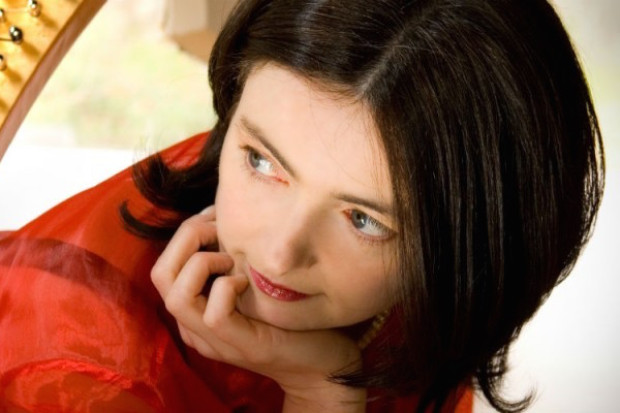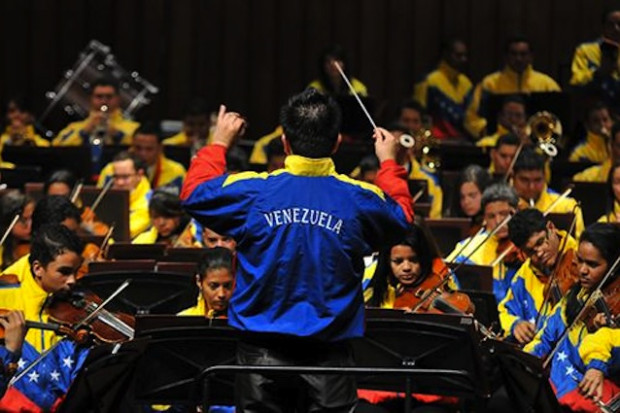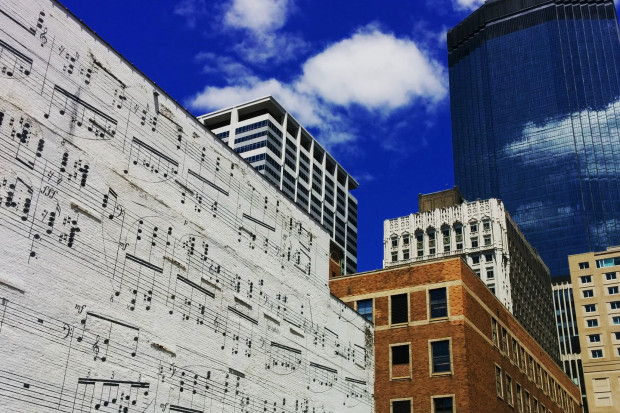The Changing Face of Music Education in Ireland
I was struck by two comments made in issue 3 of the JMI. The first by the editor Toner Quinn — ‘I hope it will be recognised that what we require is a great intellectual movement, a rethinking and reinvigorating of Ireland’s condition that summons up the energy, passion and affection of all our young intellects and artists’[1]; and the second by Benjamin Dwyer —‘ … there is an educational problem in relation to the arts in Ireland … the government negligently left the whole educational system in the hands of the religious, it now largely leaves the responsibility of arts education in the hands of the Arts Council’.[2]
For those of us who earn our living largely through the musical education of our young people as teachers and lecturers, what contribution are we making to enrich their lives through music, thereby getting this ‘great intellectual movement’ under way? In this age of accountability should we not be called into account? What are we doing to provide a musical education that will be relevant and deemed desirable to our young people, so as to not have our subject end up in a pupil ‘vox pop’ as the subject they consider the most boring and least relevant as many surveys indicate?
Dwyer uses the evidence of Leaving Certificate music to blame the government: ‘The appalling number of Leaving Certificate students sitting music (2% in 1996, down from an all-time high of 2.9% in 1985) is proof … [t]he government has never placed importance on arts education in this country’.[3] Yet, as Barra Boydell points out in issue 4 of the JMI, when the government introduced the new syllabus for Leaving Certificate in 1999, the n[umber taking music ‘increased from 1037 in 1998, the last year of the old syllabus, to 2893 last year [2000]’. Boydell feels that this ‘significant increase in the numbers of people studying music at third-level must be a cause for rejoicing. But there is another side to this … while the numbers have increased, the overall standard of students entering third-level music has declined.’[4]
How then do we maintain standards yet still attract young people to music? By giving them a broad, balanced and relevant education in music. Quinn asked for ‘a good open debate on music education within the pages of the JMI’[5] so I feel it is appropriate to lay down a few markers as to what music education is in schools and how it can develop in the future.
I believe that music education is vital to our culture through the delivery of a stimulating and relevant curriculum. As a former classroom practitioner and now teacher trainer, I present an overview from my experience of music education in Northern Ireland to demonstrate that we educators want to be accountable, and are thoughtfully trying to raise the standard and variety of the curriculum, while enhancing the status of music as a subject in schools.
What is this music education?
Music is a part of everyday life, and the preparation to meet it with increasing discrimination is a part of every pupil’s educational right.[6] Music is an experience and interpretation of sound — not so much ‘knowing about music’ as ‘musical behaviour’.
Music in the curriculum should centre on musical activities through which pupils develop musical abilities, skills and understanding of musical concepts, social skills, imagination, curiosity, enjoyment and commitment. Activities in music should lead to a sense of personal satisfaction and achievement and add to the ethos and well-being of a school.
Music can have a profound influence on the overall development of the pupil, contributing to their aesthetic, intellectual, social and physical education. It has a role to play in the development of skills essential to all areas of the curriculum, for example, the skill of listening; in the area of communication; in cultivating the imagination and creativity of the pupil; in preparing a pupil’s future role in society; and it is also linked to language development. In other words it is related to the whole curriculum. It is about:
Education in music
Education through music
The fundamental aim of music is to enable children to use and to understand music as a medium of expression and communication that can bring enjoyment and fulfillment for the rest of their lives. Children must be allowed to behave in a musical way, by being musicians who concern themselves with the three activities in which musicians participate: listening, composing and performing. Aural skills allow pupils to adopt an open mind to a wide range of music, encouraging tolerance and understanding of the tastes of others. Composing in groups develops skills of discussion, negotiation and co-operation, respecting the ideas and efforts of fellow composers. Composing original material in music uses problem-solving, decision-making and design skills and promotes constructive self-criticism. Performing develops motor skills, self-discipline and self-motivation, building self-confidence and empathy when performing with others. Pupils should develop, through these activities, the ability ‘to make and to respond to music with understanding.’[7] This is what music education is all about.
Activities in music should lead to a sense of personal satisfaction and achievement for the pupil and make a valuable contribution to the ethos of the school. The approach to teaching and delivery of the music curriculum is a ‘holistic’ one in which the three activities of listening, performing and composing are fully integrated and based on the elements/concepts of music (pulse, beat, duration, rhythm, dynamics, pitch, timbre, texture, form and style).
Pupils should develop, through the activities of listening, performing and composing, the ability ‘to make and to respond to music with understanding.’ This gives us an attainment target for music education and has become the aim for the Northern Ireland Curriculum in Music.[8]
The changing focus of music education
Music education in Northern Ireland can be described in phases based on historical change in the public perception of what music is about. When music was introduced into the national schools’ programme in the late nineteenth century it was largely based on sol-fa (solfege) work and singing of didactic songs based on the English language, in a spirit, style and sentiment of such material as The National Songbook.[9]
From the 1960s there has been a move away from choral/vocal work towards instrumental work, both in the classroom and in school music making. This came about by the provision of peripatetic instrumental tuition given by the five education and library Boards and the very successful orchestras and instrumental groups in strategically placed music centres. As part of this development instruments were provided for pupil use free of charge.
In the classroom, teachers became more progressive, resulting in a change of focus from classical ‘Art Music’ and the old concept of ‘Musical Appreciation’ to a much broader curriculum including world musics, traditional Irish music, and pop music in all its manifestations as the basis for listening and study, and in practical music-making with the change from traditional classroom percussion instruments and recorders to keyboards and keyboard labs.
In the nineties the impact of computer-based music technology was felt in the classroom, especially for composition at GCSE level and A level, and included sequencing, 4 track recording, score writing and hard disk audio recording.
Above all, the creative music movement begun in the 1960s with the work of Paynter and Ashton and the writings of Swanwick questioned the fundamentals of what classroom music was about. Unfortunately this had two repercussions: 1) the designation of teachers as either ‘creative’ or ‘traditional’ and the obvious division this created, and 2) the lack of any structure and progression in early attempts at creative music. The debate between traditional teaching methods and values and what are seen to be more ‘enlightened creative methods’ still goes on despite the holistic approach of the Northern Ireland curriculum. Issues such as teaching music literacy, classroom singing, or listening to contemporary music, still cause angst and heated debate.
If I was asked to identify the biggest single change or trend in education since I became a teacher I think it would be that education is now more about pupils learning than teachers teaching — and this is where our focus should be. Above all else music for pupils is a practical, hands-on, subject.
Although the emphasis is changing, we should not abandon all the old values and things that were important, such as music reading, singing, solfa or recorder/tin-whistle playing, to be replaced by electronic keyboards. Instead we should use the new materials and resources to complement a clear overall teaching strategy.
One of the problems for teachers that I have already mentioned is creative music — it lacked structure and progression. I think there is a need to clarify what we mean by ‘creativity’. Most agree there is such a thing as creative work and creative thinking, and getting children to produce it is of the highest educational importance. We need to beware, however, of ‘free expression’, that any response is acceptable from pupils because it is their response — that anything is worthwhile because it has been produced. Creativity is something that requires discipline, previous experience and a firm grounding in knowledge.
There are two aspects to creative work, process and product. Creative work obviously implies making or producing something. ‘It must be the work or personal achievement of the person we are calling creative.’[10] Ideally creative work must in some way be novel, original, different or distinctive from anything previously created in that genre. It can as true of new things appearing in the world for the first time as it is with new combinations of existing elements (music probably fits the latter). Creative work in some way must break new ground at least for that pupil even though it may be ‘old hat’ for the adult, e.g. playing and composing the twelve-bar blues.
Music education and culture: the case of Northern Ireland
Culture belongs to a human grouping and contains the key elements that support that group, including belief structures, arts, rules and laws, customs and practices, values and morals and products. Culture is often manifest in tradition (the ‘right’ to march?) and Tevye in Fiddler on the Roof makes clear how vulnerable culture is if these traditions were to be lost. Throughout Fiddler traditions are slowly broken, which eventually leads to the break up of the community.
Within a culture (such as the population of a country) there will be a sub-cultural group of people who are members of that larger culture in society but who operate as an ethnic minority. Cultural pluralism is a condition that will allow these minority groups to participate fully in the dominant society, yet retain their cultural differences and society benefits from such a condition. For a nation to endorse cultural pluralism is to endorse the principle that there is no one model citizen, rather it is to understand and appreciate the differences that exist among the nation’s citizens. Above all cultural pluralism attempts to preserve the cultural differences of people within one society and is the opposite of the ‘melting pot’ theory that sees a minority being consumed by the dominant culture and transformed either as its clone or as a mishmash of many influences.
In the Northern Ireland context, the recognition of two communities with different cultural and nationalistic leanings probably identifies the root cause of inter-communal strife and, of course, throw in a bit of religion and the melting pot is bubbling. Six of the original nine counties of UIster made for a permanent Unionist/protestant ‘majority’ who, because of insecurity, were unable to share or in anyway embrace the minority nationalist community. Cultural pluralism through respect for each other’s tradition and the legitimate right of their aspirations might just allow for a marriage of the cultures (see ‘Irish Music in Education — a Northern Ireland’ perspective).[11]
Curriculum pluralism: a case for world music
In Northern Ireland, curriculum singularity in music education came about by considering music as coming from only one musical tradition, the Western European musical tradition. Just as we are looking towards cultural pluralism in both parts of the Island with the arrival of new immigrants, so also must we look for curriculum pluralism. An example of this is world music as an integral part of any musical curriculum. One of the reasons we study music is that we would better understand our own culture. We gain pleasure from hearing attractive sounds and intellectual and emotional stimulation from meaningful combinations of these. According to Stock (1991), ‘What we regard as attractive and meaningful is generally culturally-specific. The study of foreign music is an equally valuable means of appreciating the cultures of others. This appreciation will be founded upon a genuine understanding of the music in question, its use, its meaning, its aesthetics and its artistic construction.’[12]
In music education we ‘teach’ world music in largely the same way as we study Western art music — by a combination of theory, history, listening, composition and performance. It should be an holistic experience to which we would add much background to explain those cultural elements, which, within the host society, seem so obvious that they may be only subconsciously aware of them. Music education in Ireland must lead the way given the success of Irish music on the world stage.
In conclusion, music is for all and all children are potentially musical. What we must be most careful of is not to dilute the quality of music education needed to support our most gifted pupils by reducing everything to a populist level where the easy option is taken. Music has a body of knowledge that needs to be taught, learned, an understood and will form the basis of a school music curriculum and music literacy is essential to this study. Yes, we can get away without music reading skills, or singing, or practising scales, through the use of the new technology and interest in the more aural forms of music, but the ‘great intellectual movement’ will never get off the ground if there is not a strong knowledge base behind our endeavours.
Notes
1 T. Quinn, ‘Editorial’ The Journal of Music in Ireland (2001) Vol.1 No.3.
2 B. Dwyer, ‘A Bouncer’s Viewpoint’, The Journal of Music in Ireland (2001) Vol.1 No.3.
3 ibid.
4 B. Boydell ‘Third-level music and the Leaving Certificate’, The Journal of Music in Ireland (2001) Vol.1 No.4.
5 T. Quinn, ‘Editorial’ The Journal of Music in Ireland (2001) Vol.1 No.4.
6 The Northern Ireland Curriculum in Music (Belfast: DENI, 1992)
7 ibid.
8 ibid.
9 C. V. Stanford and G. Shaw, The National Songbook (Boosey & Co, 1906)
10 K. Robinson, The Arts in Education (Calouste Gulbenkian Foundation, 1989) p. 34.
11 B. Burgess, ‘Irish Music in Education: A Northern Ireland Perspective’ in Fintan Vallely et al (eds) Crosbhealach an Cheoil (Ossian Publications), p. 117.
12 J. Stock ‘A Case for World Music’, British Journal of Music Education (1991) Vol.8, pp. 101–118.
Published on 1 July 2001














